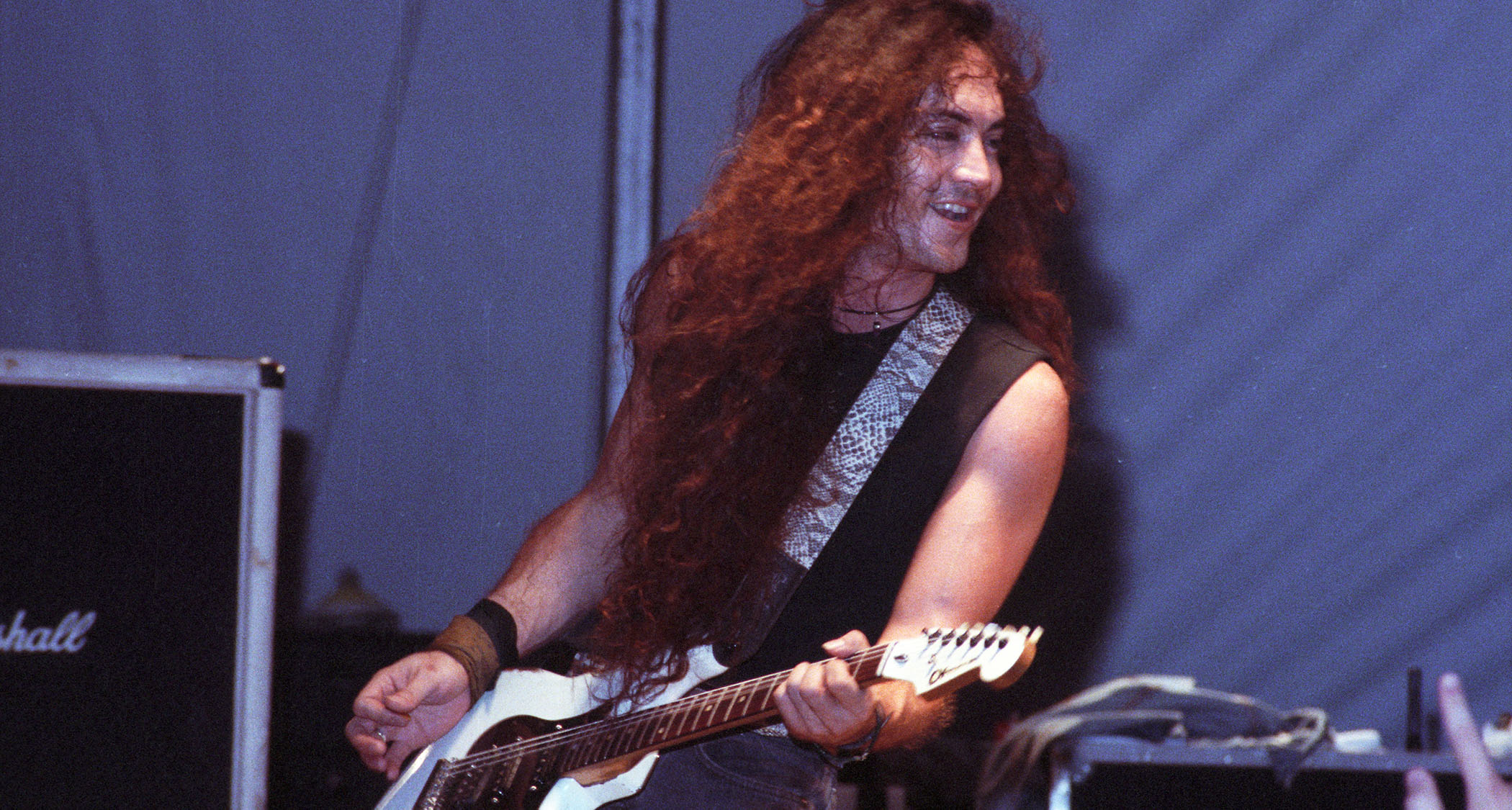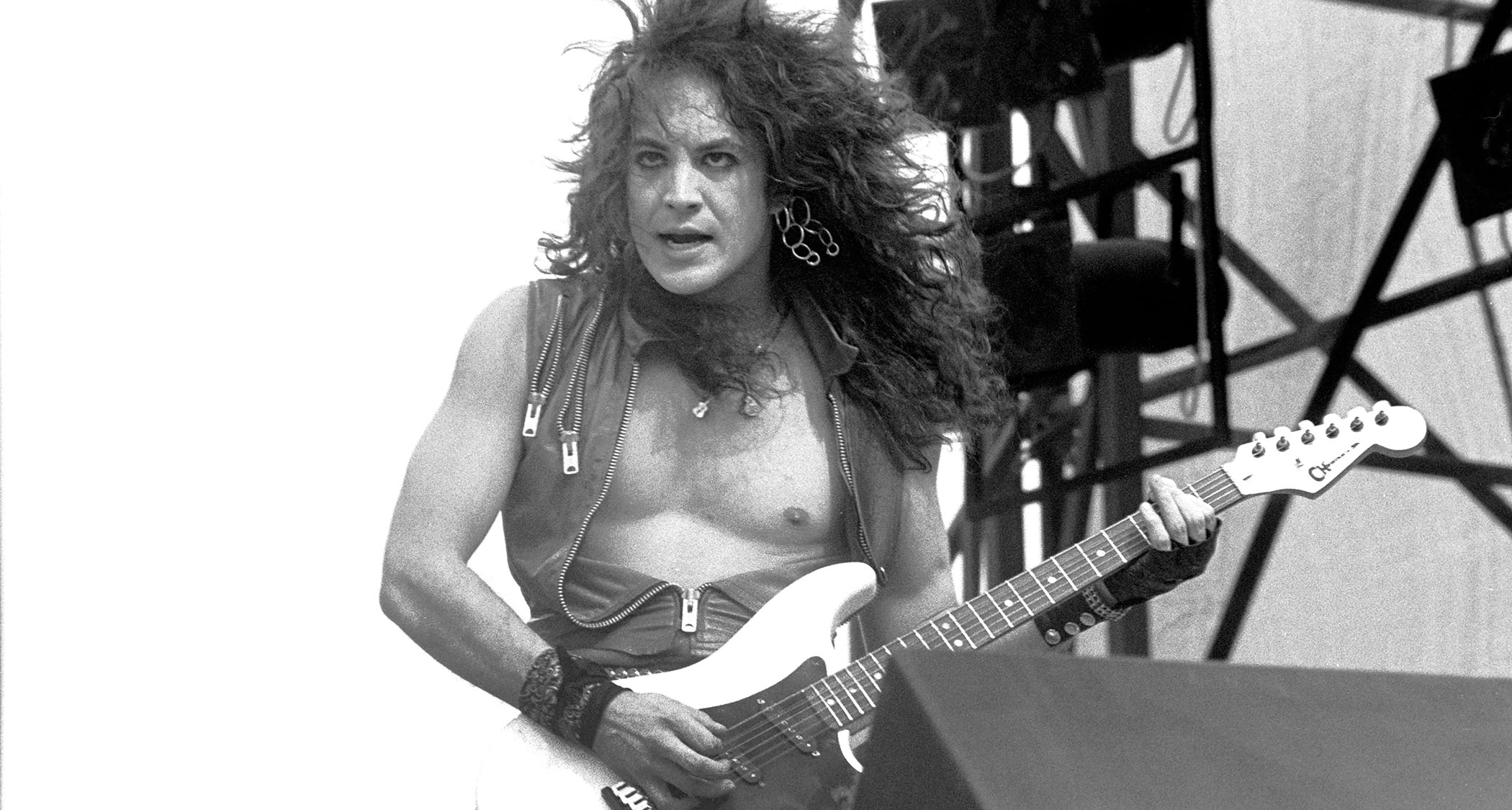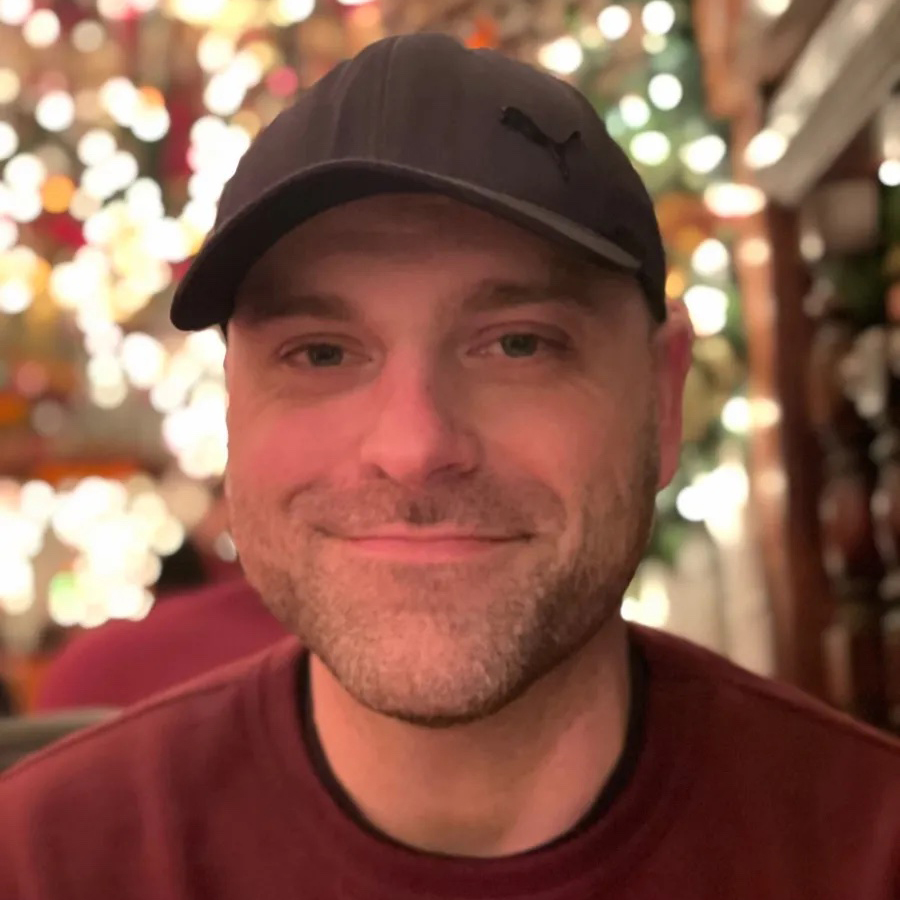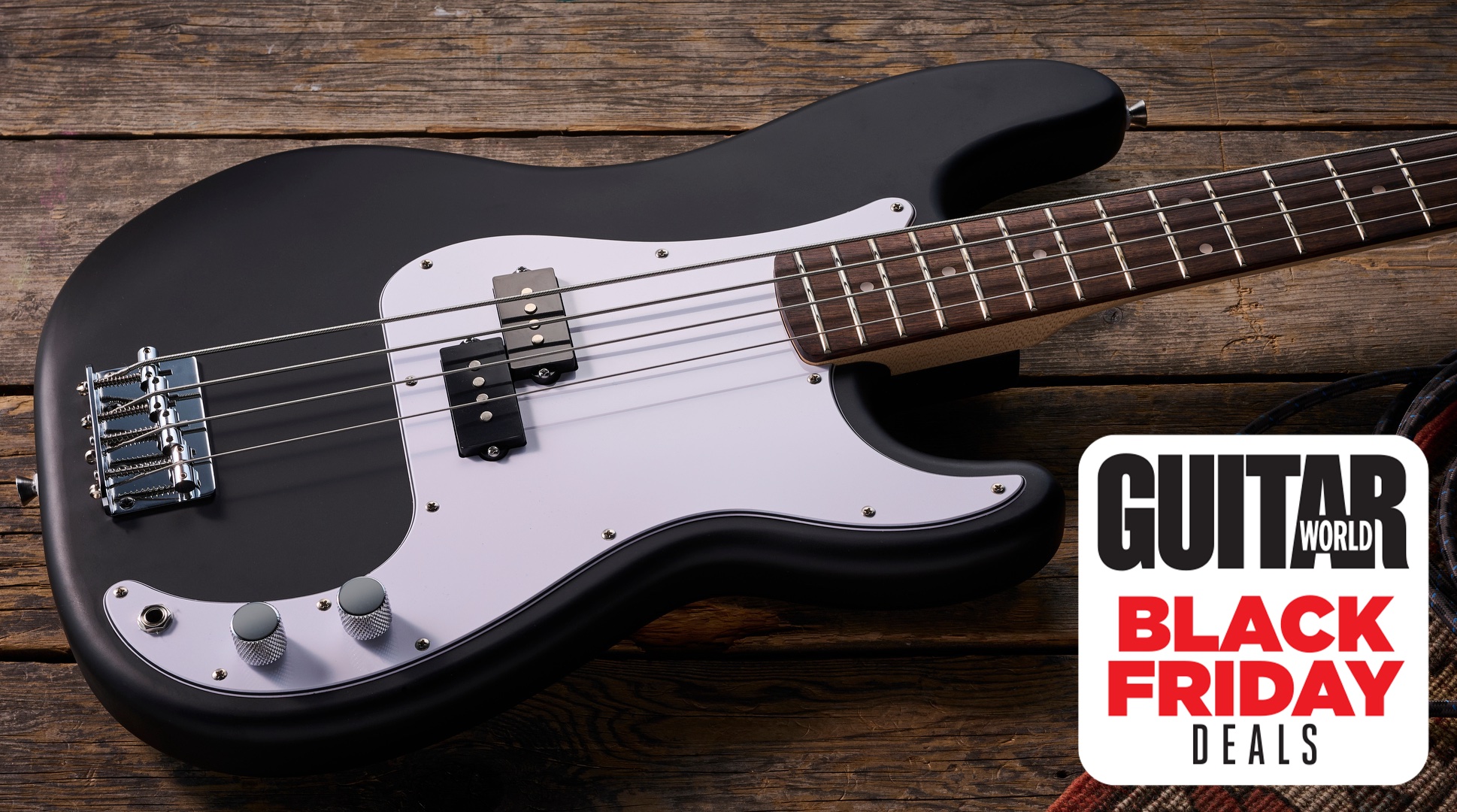“Ozzy would say, ‘No. This isn’t Frank Zappa, this is Ozzy Osbourne. Go back and write me something else’”: Jake E. Lee revisits Badlands, the album the music industry doesn't want you to hear
Why can't we buy Badlands' self-titled debut? Who knows. The record label buried it. But former Ozzy guitarist Jake E. Lee swears it's his best work

Although his playing on Ozzy Osbourne’s Bark at the Moon (1983) and The Ultimate Sin (1986) is beloved, Jake E. Lee pulls no punches when it comes to what he feels was his finest hour: 1989’s Badlands.
“I thought it was perfect,” Lee tells Guitar World. “There was nothing wrong with it. I didn’t know if it would sell, but I knew it was something I would be proud of for the rest of my life.”
Lee’s love for Badlands isn’t singular. There’s a legion of devotees who feel it was his best work. The album’s greatness doesn’t just come from the sum of its parts, aka the great songs carried out by Lee, vocalist Ray Gillen, drummer Eric Singer, and bassist Greg Chaisson, but because Lee’s musical aspiration had been pent up.
“I was getting a little frustrated,” Lee says of his latter days with Ozzy Osbourne. “But with Badlands, I could do whatever I wanted. And at that point in time, I was getting really into the blues. And Ray Gillen, when we met up, he wanted to do the same thing. We just did whatever we wanted, and it ended up being more of a blues-rock band.”
Unless you were Stevie Ray Vaughan, Jeff Healey, Robert Cray, or Eric Clapton, the blues was less popular than hard rock and Hollywood metal in the Eighties. But Lee wasn’t interested in diving deep into hair metal and felt that taking a chance on a blues‑driven record would give him the creative freedom he sought.
Lee’s need for sovereignty was one thing, but he also was brimming with confidence, leading to a record that oozes six-string-driven machismo.
“I don’t think a player ever really gets to the point where they think, ‘Oh, this is it. I’m it. This is me. I don’t need to go any further,’ you know?” he says. “You always think you can be a little better.”
All the latest guitar news, interviews, lessons, reviews, deals and more, direct to your inbox!
Most players might never get there, but with Badlands, Lee came closer than most.
“Just shy of that,” he says. “I did [get there]. I was pretty confident in my playing and the band. I thought, ‘This is the best band in the world, we’ll open for anybody. I don’t care who you are, we’ll open for you, and we might make you sorry.”
Songs like Winter’s Call, Hard Driver, and Devil’s Stomp tell the story. Lee got his wish and couldn’t have been more content. Unfortunately, behind-the-scenes dealings and the decline of hair metal, as Badlands was inaccurately categorized, contributed to the band’s demise in the 1990s. Their albums were pulled from shelves – and digital platforms – for good, at least for now.
Lee looks back on the album fondly, if also despondently. He hopes to get it out back out there for mass consumption one day, though it’s probably more or less out of his hands.
“I was really happy,” he says. “When it all folded, I was just so heartbroken that I didn’t want to do anything anymore. There was a period of a decade where I wasn’t doing anything. It was because I was just so heartbroken over what happened with Badlands.”
After playing with Ozzy for most of the Eighties, how did you want to approach Badlands?
“To be honest, by the end of my tenure with Ozzy, I wanted to branch out more. I always like a hard rock edge to whatever I’m playing, but I wanted to experiment a little more.
“When I was writing new stuff for [Ozzy’s] The Ultimate Sin record, a lot of times Ozzy would say, ‘What’s that? That’s not Ozzy, that’s jazz.’ I’d say, ‘It’s not jazz, but it’s branching out a little bit.’ Ozzy would say, ‘No. This isn’t Frank Zappa, this is Ozzy Osbourne. Go back and write me something else.’”
You wanted to do something different. Was your rig much different from what you used with Ozzy?
“It was pretty much the same as the latter half of Ozzy with Badlands. I used Gibson SGs; I love SGs, but I felt like my sound was based on using the Charvel. So, it was mostly the white Charvel, and I would sometimes double that with either the purple or blue burst Charvel.
“And I had two Marshall heads. One was a plexi and the other was an early aluminum-faceplate Marshall, which had more of an edge, while the plexi was warmer. That was my basic rig.”
One of the best solos on Badlands comes during Winter's Call. Do you remember putting that together?
“I was trying to channel Tommy Bolin. That’s the one where the first note in the solo is kind of off. Paul O’Neill was the co-producer for that album, and he said, ‘Please, that first note, it just throws me for a loop.’ [Laughs] I said, ‘I don’t want to change it. That’s why I like that note so much! I think that note’s perfect.’ He tried bribing me with money.
“He said, ‘I’ll give you 500 bucks right now out of my wallet, and tickets to see Cats, and I’ll buy you dinner at the finest restaurant.’ And he said, ‘I’m not even saying we’ll use another one, I just want to hear one where it’s not that weird note.’ I said, ‘Nope.’ I knew if I recorded another one, somehow, that would end up being it.”

Did you just like it because it was “wrong” or weird?
“I remember I wanted it to be kind of psychedelic-sounding. It’s kind of out of tune, but I liked it so much. We kept it, even though it’s a little bit out of tune. The feel of it, I thought, was really cool. I go through different modes; there was a Locrian mode in there, a Phrygian, and I was doing all these things to try and sound like I took acid in the Sixties. [Laughs]”
Dreams in the Dark was the single, and it’s probably the most pop-sounding song on the album. How did that come about?
“We’d started recording the album in L.A., and halfway through, Atlantic Records said, ‘We don’t hear a single.’ So me and Ray went back to New York and started writing more songs. Winter’s Call was one of them, but they didn’t hear a single. I just said, ‘Okay…’
“Never in my life, before or since, have I tried to write a hit single, but Dreams in the Dark was my attempt at writing a pop song. Without having pressure from the record company, I probably never would have written that song – but it’s a good song.”
Hard Driver was the b-side to Dreams in the Dark and is more in line with your vision for the record, it seems.
“Hard Driver was a song I had sitting around. I had presented it to Ozzy for Bark at the Moon and The Ultimate Sin, but he said he just couldn’t come up with anything. So that’s a song I’d had since my L.A. days, I think.”
Ozzy is a once-in-a-lifetime singer, too. He’s a unique voice. When Ozzy sings, you know it’s Ozzy
Did you find Ray Gillen to be more inspirational to you than Ozzy?
“No. I mean I don’t want to compare them as singers. Ray was an exceptional singer, a once-in-a-lifetime singer as far as actual ability to sing. But Ozzy is a once-in-a-lifetime singer, too. He’s a unique voice. When Ozzy sings, you know it’s Ozzy.
“You don’t confuse him with anybody else. He’s blessed to have a unique voice, and his writing and melodies? He’ll come up with them right away. He’d sing these melodies right off the bat; he never had to work at it. They just came to him.”
Listening back to Badlands, as far as the guitars go, there’s a lot of bravado. Were you very confident in your playing by then?
“Yeah, I was. I was very confident, although I’d never actually considered myself a ‘shredder’ in the true sense. I could [play that way] – and I did – but I always thought there were other aspects of playing, like a more melodic sense, and being more heartfelt, like the solo in Rumblin’ Train.”
And that was different from the canned shred that a lot of “hair metal” players were seemingly purchasing off shelves, so to speak.
“I’m not going to say I thought I was the best in the world, but I thought I was as good as anybody – well, except for Uli Jon Roth or some insane person like that. I thought my playing was at a level where I was maybe as happy as I could be with it.”
There’s a legion of fans who feel Badlands was the best thing you’ve ever done. Do you agree?
“The high point of my musical career, really, was Badlands. I mean, it was also Ozzy because I was thrown into it from playing clubs and into Ozzy, which was wonderful. But with Badlands, as far as creativity, working with other musicians, and having a band unit, that was as good as it ever got.”
Did you feel that way from the first time you listened back to Badlands after wrapping the recording sessions?
“The first time I listened back in ’89 and heard the finished product, I didn’t know if it was going to sell, but I knew it was really, really good. I knew it was, to me, perfect. I worked really hard on the songs, and I was there for everybody while recording. I was there for the mixes, and I thought – and I don’t want to sound like an ego man – it was a beautiful piece of art. It’s too bad you can’t get it anymore, but whatever.”
Badlands can’t be streamed, and physical media isn’t available. Are you planning to change that?
“There might be one thing, but I’ve gotta act on it fast. There might be one way where I can get the masters, and I really need to start working on that because that’s it. There’s a deadline on that.”
There have been a lot of theories, but why has Badlands been buried?
“It was such a mess, that whole thing. There’s been so many theories about why you can’t get it, but it was [co-founder and former president of Atlantic Records] Ahmet Ertegun. It was his decree to bury Badlands. He said he never wanted us to see the light of day again. He was very upset with Ray, and he had a falling out with Paul O’Neill.
“I don’t know exactly what he said, but Ahmet was so upset with Ray – and this is what I’ve heard from people that would know – and he made a decree and said, ‘We’re burying Badlands. I don’t ever want them to see the light of day again. They’re history.’ And he was the man. It was his record company.”
What’s your outlook on this music, which clearly meant a lot to you, seeing the light of day again?
“Who knows? I imagine that someday, depending on who’s present at the label, someone will say, ‘We’ve punished them enough.’ There’s potential for making money here because lots of people would love to see that album out again. There’s a lot of interest in it.
“The fact that it’s so buried and hard to get has added somewhat to its legend. But eventually, because this is the way corporations go, somebody’s gonna say, ‘We’ll make some money off it. Let’s put it out again.’ I hope!”
- This article first appeared in Guitar World. Subscribe and save.
Andrew Daly is an iced-coffee-addicted, oddball Telecaster-playing, alfredo pasta-loving journalist from Long Island, NY, who, in addition to being a contributing writer for Guitar World, scribes for Bass Player, Guitar Player, Guitarist, and MusicRadar. Andrew has interviewed favorites like Ace Frehley, Johnny Marr, Vito Bratta, Bruce Kulick, Joe Perry, Brad Whitford, Tom Morello, Rich Robinson, and Paul Stanley, while his all-time favorite (rhythm player), Keith Richards, continues to elude him.
You must confirm your public display name before commenting
Please logout and then login again, you will then be prompted to enter your display name.




